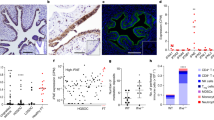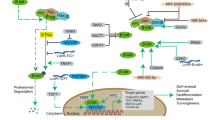Abstract
Human ovarian adenocarcinoma cells N.1 secrete an autocrine activity that stimulates active cell death under serum-reduced conditions. To substitute the autocrine activity by a single physiological component, 28 cytokines, growth factors and biomodulators were tested [interleukin 1alpha (IL-1alpha), IL-1beta, IL-2, IL-3, IL-4, IL-6, IL-10, IL-11, stem cell factor (SCF), platelet-derived growth factor (PDGF), acid fibroblast growth factor (aFGF), basic fibroblast growth factor (bFGF), insulin-like growth factor (IGF-1), IGF-2, insulin, macrophage colony-stimulating factor (M-CSF), granulocyte colony-stimulating factor (G-CSF), granulocyte-macrophage colony-stimulating factor (GM-CSF), oncostatin, RANTES (regulated on activation normal T cell expressed and secreted), angiogenin, leukaemia inhibitory factor (LIF), erythropoietin (EPO), interferon alpha (INF-alpha), INF-gamma, transferrin, tumour necrosis factor alpha (TNF-alpha, TNF-beta and bovine serum albumin for control reasons]. In these experiments, only TNF-alpha and TNF-beta rapidly induced apoptosis. TNF-alpha and TNF-receptor 1 were expressed by N.1 cells, and the secretion of TNF-alpha was verified by enzyme-linked immunosorbent assay (ELISA). Autocrine factor-triggered apoptosis was inhibited when conditioned supernatant was preincubated with anti-TNF-alpha antibody. These findings suggested that the apoptosis-inducing component of the N.1 autocrine activity was TNF-alpha. In the presence of antisense c-myc oligonucleotides, induction of cell death by autocrine factor was partly inhibited. Autocrine factor and TNF-alpha stimulated transcription of the invasiveness-related protease plasminogen activator/urokinase mRNA (upa) with similar kinetics. When N.1 cells were exposed to purified plasminogen activator/urokinase protein (uPA), cell matrix contact was disrupted. Thus, uPA might serve a physiological role during TNF-induced apoptosis by affecting the interactions between cells and the basal membrane, thereby facilitating anoikis. This mechanistic study, which was restricted to a single human ovarian carcinoma model cell line (N.1), provides evidence that N.1 maintains the capacity to undergo c-myc-dependent apoptosis by the TNF-TNF-receptor pathway, and no additional pharmacological stimuli for induction of apoptosis are required.
This is a preview of subscription content, access via your institution
Access options
Subscribe to this journal
Receive 24 print issues and online access
$259.00 per year
only $10.79 per issue
Buy this article
- Purchase on Springer Link
- Instant access to full article PDF
Prices may be subject to local taxes which are calculated during checkout
Similar content being viewed by others
Author information
Authors and Affiliations
Rights and permissions
About this article
Cite this article
Simonitsch, I., Krupitza, G. Autocrine self-elimination of cultured ovarian cancer cells by tumour necrosis factor α (TNF-α). Br J Cancer 78, 862–870 (1998). https://doi.org/10.1038/bjc.1998.594
Issue Date:
DOI: https://doi.org/10.1038/bjc.1998.594



